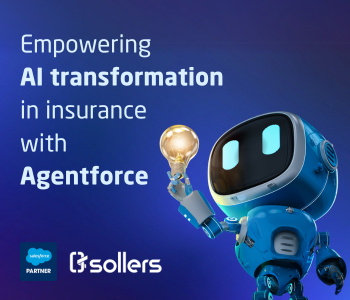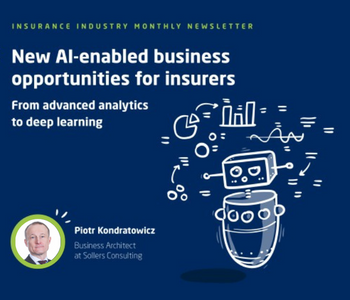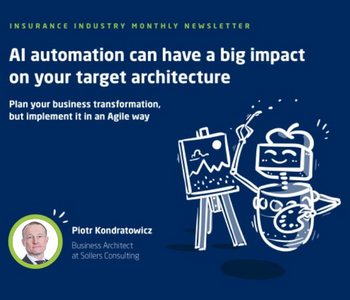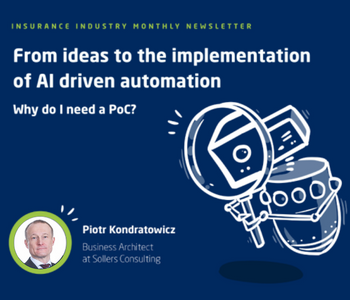
Software quality isn’t just a checkbox in insurance IT – it’s mission-critical. Faulty code can trigger system outages, data breaches, and compliance failures, with severe regulatory and reputational costs. Yet many IT leaders hesitate to adopt new quality assurance (QA) technologies due to up-front integration costs, uncertain return-of-investments (ROI) timelines, and concerns around disrupting legacy toolchains.
Recent advances in AI-driven quality assurance offer a paradigm shift. Leveraging machine learning and large-scale code analysis, these tools help insurance IT teams detect defects earlier, enforce consistent standards, and accelerate delivery without sacrificing quality. Instead of relying solely on handcrafted rules or pre-defined tests, modern AI driven quality assurance (QA) tools analyse live code changes against vast knowledge bases and prior patterns. This enables intelligent suggestions, deeper semantic reasoning, and real-time contextual awareness that traditional static analysis tools can’t match. But what does the evidence say about their actual impact?
The Stakes: Quality Failures in Insurance IT
According to a 2023 report by the Ponemon Institute, the average cost of a data breach in the financial services sector (including insurance) rose to $6 million per incident, largely driven by software vulnerabilities [1]. The IBM Cost of a Data Breach Report (2023) highlights that 83% of breaches involve application vulnerabilities or bugs – underlining how critical solid code quality is for risk mitigation [2]. A minor UI bug cost a Japanese insurer $10,500 in 2023 – $7900 of which could have been saved if the issue had been caught during QA. The glitch, which affected 1.5% of users, wasn’t critical. But it was costly – and avoidable. Moreover, regulatory frameworks like GDPR, DORA, and state-level insurance regulations require stringent software compliance – with penalties scaling into millions for non-conformance. QA failures, therefore, are not just development issues but potential legal and financial risks.
USD 2.2M The average cost savings for organizations that used security AI and automation extensively in prevention versus those that didn’t [1].
USD 4.9M The global average cost of a data breach in 2024: a 10% increase over last year and the highest total ever [1].
The Limits of Manual Review
Insurance software often entails legacy systems, layered integrations, and continuous regulatory updates. Manual code reviews, static code analysis, and test automation form the QA backbone, but each has limitations:
- Manual reviews are labour-intensive, prone to inconsistency, and scale poorly
- Static analysis tools generate high false-positive rates – leading to alert fatigue – and struggle to keep up with evolving architectures and documentation.
- Automated tests catch regressions but rarely cover nuanced security or maintainability defects. Maintaining high code coverage is resource-intensive and can ironically introduce new bugs when tests are rushed or duplicated.
The result: mounting tech debt, inconsistent review quality across teams, and increasing compliance exposure as manual processes fail to keep up. Gartner’s 2024 “Market Guide for AI-Powered Software Quality Tools” notes that these traditional approaches can’t sufficiently address the complexity or speed requirements of modern insurance IT environments [3].
What AI Does Differently?
AI driven QA solutions like CARE (Code AI Review Excellence) combine natural language processing, machine learning, and vast code corpus insights to detect subtle defects, security issues, and architectural smells. For insurance IT, this means:
- Detecting latent bugs and vulnerabilities before deployment: Microsoft’s 2023 study found AI-assisted code reviews improved defect detection rates by 30–50% compared to manual processes alone [4].
- Reducing time spent on routine code reviews: The same study cited developer productivity gains of 20–40% through faster feedback loops.
- Consistent application of quality standards: AI tools maintain uniform review criteria across distributed teams and complex projects, reducing human error.
- Supporting legacy and hybrid tech stacks: AI models trained on diverse codebases adapt to insurance systems spanning COBOL, Java, and modern microservices.
What Is CARE?
CARE (Code Analysis and Review Engine) is a lightweight, CI/CD-integrated AI plugin that performs contextual code review during pull requests. It analyses MR diffs, sends them to an LLM endpoint hosted securely on Google Cloud, and returns actionable, in-line comments – all without persisting code.
Evidence from the Field
Real-world adoption of AI-powered QA shows measurable business value across insurers and regulatory bodies. A tier-2 European insurer with 18 developers integrated CARE into its CI/CD pipeline and saved nearly $1 million in one year, driven by reduced rework, lower QA effort, and faster time to production. Another insurer reported a 25% reduction in audit preparation time due to AI’s automatic identification of compliance-related code issues. In the United States, the Cybersecurity & Infrastructure Security Agency (CISA) endorses AI-powered static analysis for high-assurance software development – a relevant development for U.S. insurers responsible for protecting critical infrastructure [5].
Why Now?
Regulations: Several recent EU regulations are reshaping how insurance IT teams must approach software quality. The Digital Operational Resilience Act (DORA) [6] and NIS2 Directive[7] both introduce stricter requirements around secure software development, operational continuity, and testing rigor. Meanwhile, EIOPA’s guidance reinforces the need for robust QA practices in insurance core systems like Guidewire, which handle sensitive customer data and critical business workflows [8]. In this new environment, well-documented, consistently executed QA workflows are no longer optional – they are a core part of regulatory compliance.
Accelerating Guidewire Cloud Release Cycles: Guidewire Cloud’s release cadence has increased significantly, shifting from traditional annual upgrades to a more continuous delivery model with monthly updates [9]. While this provides insurers with faster access to new features, it also introduces new challenges:
- Less time for developers and QA teams to adapt, test, and validate each change.
- Customizations and integrations require ongoing maintenance to remain compatible.
- Manual QA processes often can’t keep up without becoming a bottleneck.
- Regression risks and potential disruption to critical workflows rise with each release.
In this fast-moving environment, automated and AI-assisted QA tools integrated into CI/CD pipelines can provide timely, contextual feedback – enabling faster issue detection and more reliable releases.
The Rise of AI-Driven Customizations: The adoption of AI and agentic systems in insurance has sparked a new wave of innovation – and complexity. Many of these systems operate in a rapidly evolving and largely unregulated domain, introducing new risks around data handling, explainability, and system behaviour. With AI-powered capabilities being integrated into Guidewire and other systems, design decisions and knowledge gaps are now more critical than ever. Domain-specific QA tools can help developers validate fundamentals while providing on-demand access to curated knowledge bases, accelerating delivery without compromising quality.
Addressing Concerns
While AI QA offers clear advantages, IT leaders often raise legitimate concerns before adoption. One common concern is false positives. Modern AI QA tools address this by continuously learning from developer feedback, which helps reduce noise and improve signal over time. Another concern is integration complexity. Most AI QA platforms are designed to integrate smoothly with common DevOps tools and version control systems, minimizing disruption. The question of cost versus benefit is also frequently raised. According to IDC, organizations adopting AI QA report a 300% return on investment over three years, driven by fewer defects, faster releases, and lower compliance penalties [10].
Code privacy and data security are also top of mind. Enterprise-ready AI QA solutions are built with strict data protection measures. Only code relevant to the analysis is sent, and no prompts or content are logged or cached. Data is processed in-memory and never persisted. For added security, all communication is encrypted, and clients can enforce controls such as VPC Service Controls, Google DLP redaction, and IAM-based role-based access controls. In most setups, data never leaves the geographic region defined by the client, ensuring compliance with GDPR, ISO 27001, and internal governance policies.
Conclusion: From Caution to Competitive Advantage
In today’s insurance IT landscape, complexity is rising, release cycles are shrinking, and compliance risks are escalating. Manual QA simply can’t keep pace. AI-driven QA tools like CARE offer more than efficiency — they deliver a strategic edge: faster releases, fewer defects, and stronger compliance. For insurers facing relentless pressure to modernize while minimizing risk, the time to adopt AI QA isn’t in the future — it’s now. CARE enables teams to upgrade their QA maturity without overhauling existing workflows. It’s not just about catching bugs — it’s about protecting business-critical systems, reputations, and regulatory standing.
In short: AI QA is no longer experimental. It’s operational.
AI-driven QA is shifting from experimental to essential in insurance IT.
By detecting defects earlier, ensuring compliance, and keeping pace with faster release cycles, tools like CARE reduce risk and deliver measurable ROI.
Insurers that invest now gain a competitive advantage — improving system reliability, regulatory resilience, and speed to market.
Authors of the article
 Davide Santonocito - IT Consultant, AI Engineer & Technical Leader at Sollers Consulting
Davide Santonocito - IT Consultant, AI Engineer & Technical Leader at Sollers Consulting
References
[1] Ponemon Institute. (2023). Cost of a Data Breach Report – Financial Services Sector.
[2] IBM Security. (2023). Cost of a Data Breach Report 2023. https://www.ibm.com/reports/data-breach
[3] Gartner. (2024). Market Guide for AI-Powered Software Quality Tools.
[4] Microsoft. (2023). Unlocking AI’s global potential: progress, productivity, and workforce development. https://blogs.microsoft.com/on-the-issues/2025/04/10/unlocking-ai-global-potential
[5] CISA. (2022). NIST SP 800-218, Secure Software Development Framework V1.1: Recommendations for Mitigating the Risk of Software Vulnerabilities. https://www.cisa.gov/resources-tools/resources/nist-sp-800-218-secure-software-development-framework-v11-recommendations-mitigating-risk-software
[6] European Commission. (2023). Digital Operational Resilience Act (DORA). https://www.eiopa.europa.eu/digital-operational-resilience-act-dora_en
[7] European Commission. (2023). NIS2 Directive. https://digital-strategy.ec.europa.eu/en/policies/nis2-directive
[8] EIOPA. (2022). Guidelines on ICT Security and Governance. https://www.eiopa.europa.eu/publications/guidelines-information-and-communication-technology-security-and-governance_en
[9] Guidewire. (2024). Cloud Release Schedule. https://www.guidewire.com/products/technology/guidewire-cloud-platform-releases
[10] IDC. (2023). FutureScape: Worldwide Artificial Intelligence and Automation 2024 Predictions—Prediction 5 notes that by 2025, 60% of enterprises will refocus on outcome-based automation strategies, highlighting ROI-driven adoption of AI solutions including quality assurance tools https://www.idc.com/wp-content/uploads/2025/03/IDC_FutureScape_Worldwide_Artificial_Intelligence_and_Automation_2024_Predictions_-_2023_Oct.pdf?utm_source=chatgpt.com
Technology & Market Insights







